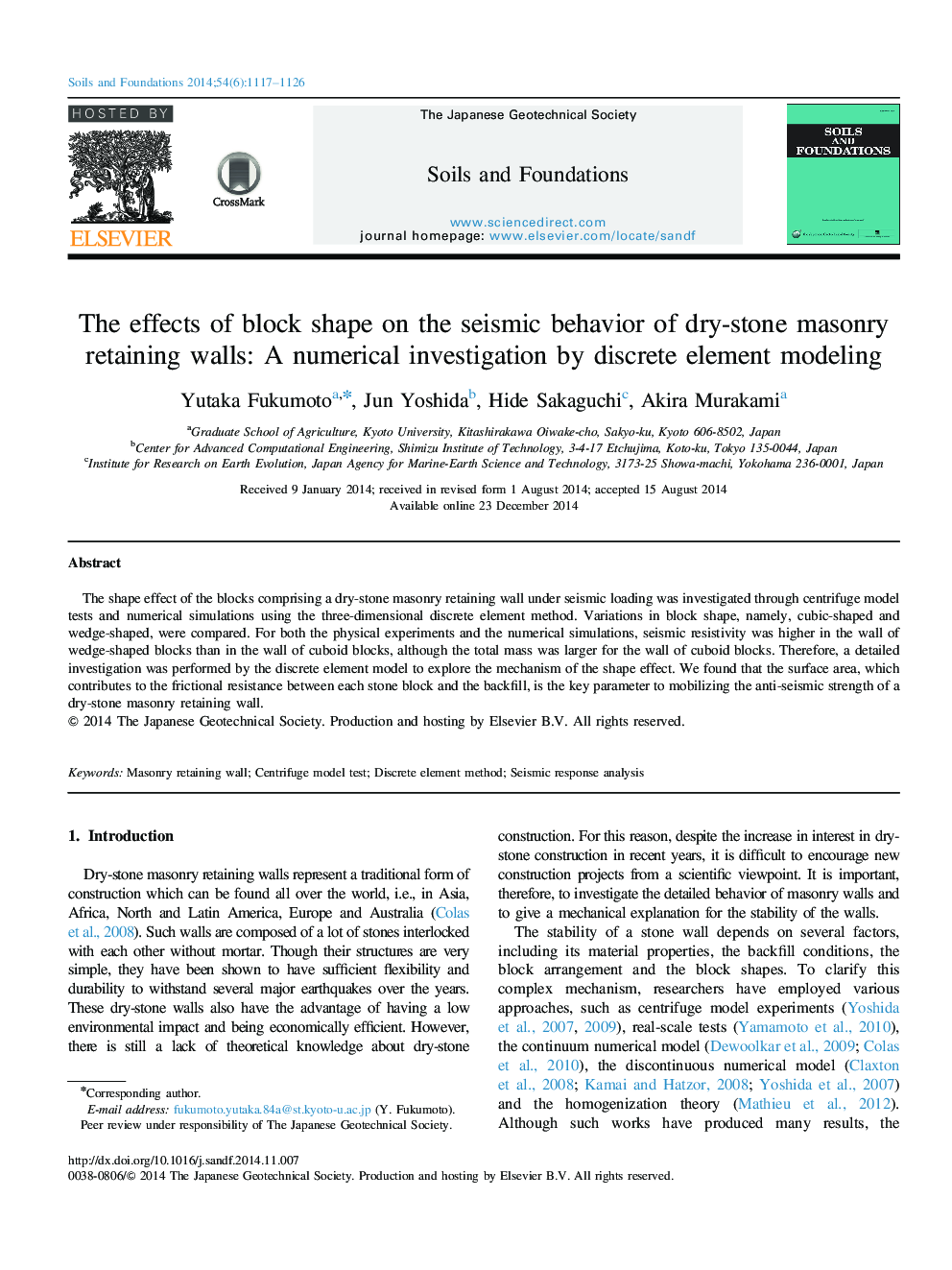| Article ID | Journal | Published Year | Pages | File Type |
|---|---|---|---|---|
| 307271 | Soils and Foundations | 2014 | 10 Pages |
The shape effect of the blocks comprising a dry-stone masonry retaining wall under seismic loading was investigated through centrifuge model tests and numerical simulations using the three-dimensional discrete element method. Variations in block shape, namely, cubic-shaped and wedge-shaped, were compared. For both the physical experiments and the numerical simulations, seismic resistivity was higher in the wall of wedge-shaped blocks than in the wall of cuboid blocks, although the total mass was larger for the wall of cuboid blocks. Therefore, a detailed investigation was performed by the discrete element model to explore the mechanism of the shape effect. We found that the surface area, which contributes to the frictional resistance between each stone block and the backfill, is the key parameter to mobilizing the anti-seismic strength of a dry-stone masonry retaining wall.
